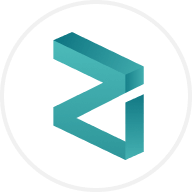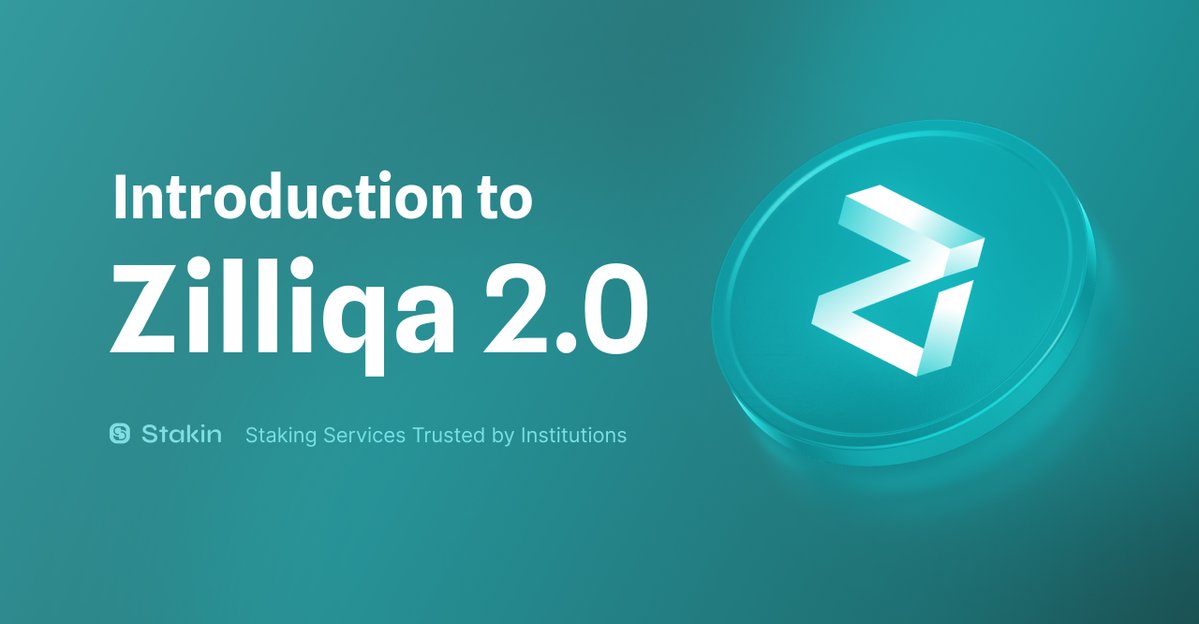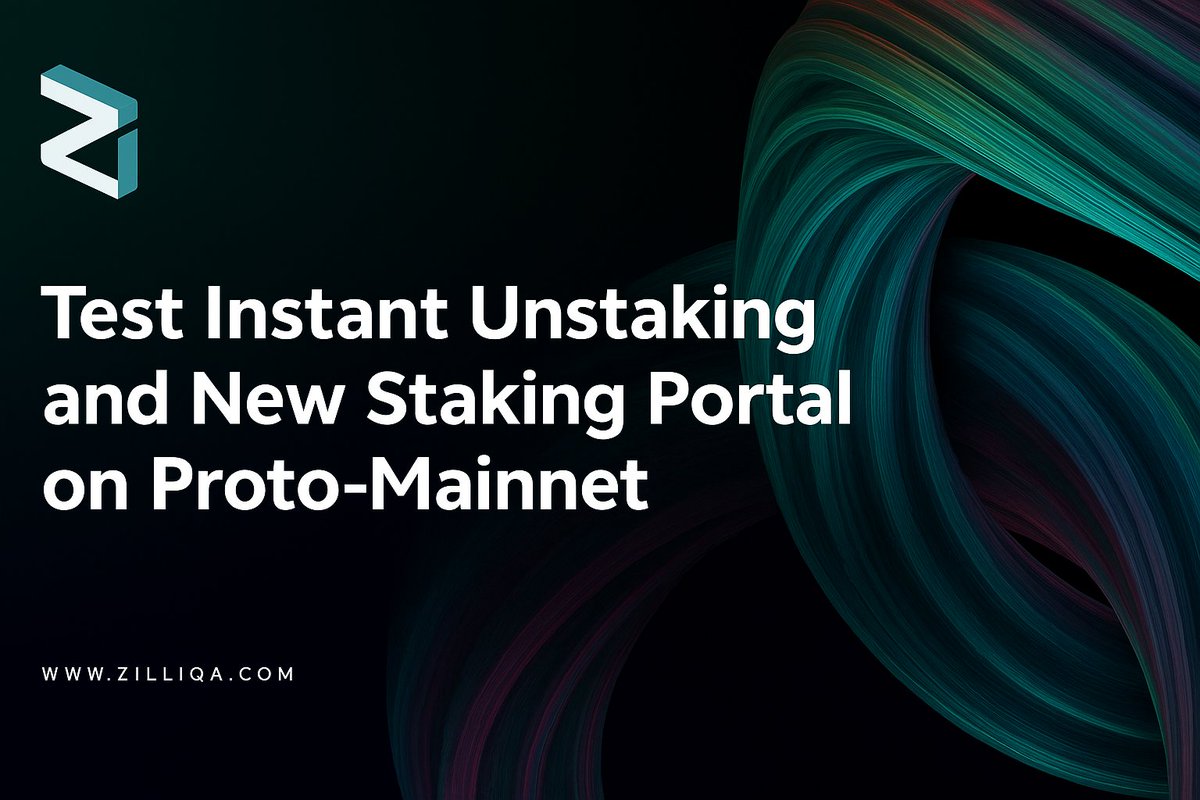
ZIL
Zilliqa价格
$0.010120
-$0.00044
(-4.17%)
过去 24 小时的价格变化

您认为 ZIL 今天会涨还是会跌?
您可以点赞或点踩来表达对该币种今日涨跌的预测
投票并查看结果
免责声明
本页面的社交内容 (包括由 LunarCrush 提供支持的推文和社交统计数据) 均来自第三方,并按“原样”提供,仅供参考。本文内容不代表对任何数字货币或投资的认可或推荐,也未获得欧易授权或撰写,也不代表我们的观点。我们不保证所显示的用户生成内容的准确性或可靠性。本文不应被解释为财务或投资建议。在做出投资决策之前,评估您的投资经验、财务状况、投资目标和风险承受能力并咨询独立财务顾问至关重要。过去的表现并不代表未来的结果。您的投资价值可能会波动,您可能无法收回您投资的金额。您对自己的投资选择自行承担全部责任,我们对因使用本信息而造成的任何损失或损害不承担任何责任。提供外部网站链接是为了用户方便,并不意味着对其内容的认可或控制。
请参阅我们的 使用条款 和 风险警告,了解更多详情。通过使用第三方网站(“第三方网站”),您同意对第三方网站的任何使用均受第三方网站条款的约束和管辖。除非书面明确说明,否则欧易及其关联方(“OKX”)与第三方网站的所有者或运营商没有任何关联。您同意欧易对您使用第三方网站而产生的任何损失、损害和任何其他后果不承担任何责任。请注意,使用第三方网站可能会导致您的资产损失或贬值。本产品可能无法在所有司法管辖区提供或适用。
请参阅我们的 使用条款 和 风险警告,了解更多详情。通过使用第三方网站(“第三方网站”),您同意对第三方网站的任何使用均受第三方网站条款的约束和管辖。除非书面明确说明,否则欧易及其关联方(“OKX”)与第三方网站的所有者或运营商没有任何关联。您同意欧易对您使用第三方网站而产生的任何损失、损害和任何其他后果不承担任何责任。请注意,使用第三方网站可能会导致您的资产损失或贬值。本产品可能无法在所有司法管辖区提供或适用。
Zilliqa 市场信息
市值
市值是通过流通总应量与最新价格相乘进行计算。市值 = 当前流通量 × 最新价
流通总量
目前该代币在市场流通的数量
市值排行
该资产的市值排名
历史最高价
该代币在交易历史中的最高价格
历史最低价
该代币在交易历史中的最低价格
市值
$1.98亿
流通总量
19,518,192,916 ZIL
占
21,000,000,000 ZIL
的 92.94%市值排行
119
审计方

最后审计日期:2021年12月29日 (UTC+8)
24 小时最高
$0.010740
24 小时最低
$0.0098300
历史最高价
$0.25666
-96.06% (-$0.24654)
最后更新日期:2021年5月6日 (UTC+8)
历史最低价
$0.0022100
+357.91% (+$0.0079100)
最后更新日期:2020年3月13日 (UTC+8)
Zilliqa 动态资讯
以下内容源自 。

Zilliqa
Zilliqa 2.0 即将来临——欢迎进入新时代!
🎁 Zilliqa 1.0 在区块 4770087 结束,最后的新交易在区块 4769950 被接受。
🗓️ 6 月 23 日启动迁移到 Zilliqa 2.0
⛓️ 主网将在 6 月 23 日后几天内启动。
进入 Zilliqa 2.0 – Agate 阶段,包含:
⚙️ Scilla ↔ EVM 互操作性——前所未有的构建体验
⚡️ 超快的区块处理,平均区块时间约为 2 秒
🛡️ 新的质押门户——更简单但更智能
📦 无缝迁移——账户、合约、区块,一切都向前推进
Zilliqa 2.0 不仅仅是一次升级——它是未来的发射台。
查看原文4.95万
376
ZIL 计算器


Zilliqa 价格表现 (美元)
Zilliqa 当前价格为 $0.010120。Zilliqa 的价格在过去 24 小时内下跌了 -4.17%。目前,Zilliqa 市值排名为第 119 名,实时市值为 $1.98亿,流通供应量为 19,518,192,916 ZIL,最大供应量为 21,000,000,000 ZIL。我们会实时更新 Zilliqa/USD 的价格。
今日
-$0.00044
-4.17%
7 天
-$0.00092
-8.34%
30 天
-$0.00362
-26.35%
3 个月
-$0.00285
-21.98%
关于 Zilliqa (ZIL)
此评级是欧易从不同来源收集的汇总评级,仅供一般参考。欧易不保证评级的质量或准确性。欧易无意提供 (i) 投资建议或推荐;(ii) 购买、出售或持有数字资产的要约或招揽;(iii) 财务、会计、法律或税务建议。包括稳定币和 NFT 的数字资产容易受到市场波动的影响,风险较高,波动较大,可能会贬值甚至变得一文不值。数字资产的价格和性能不受保证,且可能会发生变化,恕不另行通知。您的数字资产不受潜在损失保险的保障。 历史回报并不代表未来回报。欧易不保证任何回报、本金或利息的偿还。欧易不提供投资或资产建议。您应该根据自身的财务状况仔细考虑交易或持有数字资产是否适合您。具体情况请咨询您的专业法务、税务或投资人士。
展开更多
- 官网
- 白皮书
- Github
- 区块浏览器
关于第三方网站
关于第三方网站
通过使用第三方网站(“第三方网站”),您同意对第三方网站的任何使用均受第三方网站条款的约束和管辖。除非书面明确说明,否则 OKX 及其关联方(“OKX”)与第三方网站的所有者或运营商没有任何关联。您同意 OKX 对您使用第三方网站而产生的任何损失、损害和任何其他后果不承担任何责任。请注意,使用第三方网站可能会导致您的资产损失或贬值。
Zilliqa 常见问题
Zilliqa 今天值多少钱?
目前,一个 Zilliqa 价值是 $0.010120。如果您想要了解 Zilliqa 价格走势与行情洞察,那么这里就是您的最佳选择。在欧易探索最新的 Zilliqa 图表,进行专业交易。
数字货币是什么?
数字货币,例如 Zilliqa 是在称为区块链的公共分类账上运行的数字资产。了解有关欧易上提供的数字货币和代币及其不同属性的更多信息,其中包括实时价格和实时图表。
数字货币是什么时候开始的?
由于 2008 年金融危机,人们对去中心化金融的兴趣激增。比特币作为去中心化网络上的安全数字资产提供了一种新颖的解决方案。从那时起,许多其他代币 (例如 Zilliqa) 也诞生了。
Zilliqa 的价格今天会涨吗?
查看 Zilliqa 价格预测页面,预测未来价格,帮助您设定价格目标。
ESG 披露
ESG (环境、社会和治理) 法规针对数字资产,旨在应对其环境影响 (如高能耗挖矿)、提升透明度,并确保合规的治理实践。使数字代币行业与更广泛的可持续发展和社会目标保持一致。这些法规鼓励遵循相关标准,以降低风险并提高数字资产的可信度。
资产详情
名称
OKcoin Europe LTD
相关法人机构识别编码
54930069NLWEIGLHXU42
代币名称
Zilliqa
共识机制
Zilliqa is present on the following networks: Binance Smart Chain, Zilliqa.
Binance Smart Chain (BSC) uses a hybrid consensus mechanism called Proof of Staked Authority (PoSA), which combines elements of Delegated Proof of Stake (DPoS) and Proof of Authority (PoA). This method ensures fast block times and low fees while maintaining a level of decentralization and security. Core Components 1. Validators (so-called “Cabinet Members”): Validators on BSC are responsible for producing new blocks, validating transactions, and maintaining the network’s security. To become a validator, an entity must stake a significant amount of BNB (Binance Coin). Validators are selected through staking and voting by token holders. There are 21 active validators at any given time, rotating to ensure decentralization and security. 2. Delegators: Token holders who do not wish to run validator nodes can delegate their BNB tokens to validators. This delegation helps validators increase their stake and improves their chances of being selected to produce blocks. Delegators earn a share of the rewards that validators receive, incentivizing broad participation in network security. 3. Candidates: Candidates are nodes that have staked the required amount of BNB and are in the pool waiting to become validators. They are essentially potential validators who are not currently active but can be elected to the validator set through community voting. Candidates play a crucial role in ensuring there is always a sufficient pool of nodes ready to take on validation tasks, thus maintaining network resilience and decentralization. Consensus Process 4. Validator Selection: Validators are chosen based on the amount of BNB staked and votes received from delegators. The more BNB staked and votes received, the higher the chance of being selected to validate transactions and produce new blocks. The selection process involves both the current validators and the pool of candidates, ensuring a dynamic and secure rotation of nodes. 5. Block Production: The selected validators take turns producing blocks in a PoA-like manner, ensuring that blocks are generated quickly and efficiently. Validators validate transactions, add them to new blocks, and broadcast these blocks to the network. 6. Transaction Finality: BSC achieves fast block times of around 3 seconds and quick transaction finality. This is achieved through the efficient PoSA mechanism that allows validators to rapidly reach consensus. Security and Economic Incentives 7. Staking: Validators are required to stake a substantial amount of BNB, which acts as collateral to ensure their honest behavior. This staked amount can be slashed if validators act maliciously. Staking incentivizes validators to act in the network's best interest to avoid losing their staked BNB. 8. Delegation and Rewards: Delegators earn rewards proportional to their stake in validators. This incentivizes them to choose reliable validators and participate in the network’s security. Validators and delegators share transaction fees as rewards, which provides continuous economic incentives to maintain network security and performance. 9. Transaction Fees: BSC employs low transaction fees, paid in BNB, making it cost-effective for users. These fees are collected by validators as part of their rewards, further incentivizing them to validate transactions accurately and efficiently.
The Zilliqa blockchain uses a hybrid consensus mechanism that combines Practical Byzantine Fault Tolerance (pBFT) and Proof of Work (PoW) to ensure high throughput, scalability, and security. The main components of Zilliqa's consensus mechanism include the following: Key Features of Zilliqa's Consensus Mechanism: 1. Sharding: Zilliqa achieves scalability through sharding, where the network is divided into smaller units called shards. Each shard processes its own set of transactions and smart contracts in parallel, allowing the network to handle a higher volume of transactions. 2. Proof of Work (PoW): The PoW mechanism is used for consensus initiation. It is primarily used to secure the network and assign nodes to shards. PoW miners solve computational puzzles to participate in block generation. However, PoW is only used for a short time at the beginning of the consensus process, and the workload is much lower than in traditional PoW systems like Bitcoin. The PoW mechanism ensures that only nodes with sufficient computational power are selected to participate in the network, reducing the likelihood of Sybil attacks. 3. Practical Byzantine Fault Tolerance (pBFT): Once the PoW phase is complete and nodes are assigned to shards, pBFT is used to reach consensus within each shard. This is a more energy-efficient consensus algorithm than traditional PoW because it doesn't require miners to perform extensive computations after the initial selection. pBFT ensures finality of blocks and ensures that even if some nodes behave maliciously or fail, the network can still reach an agreement and process transactions correctly. pBFT works by having validators from the shard participate in a consensus process to agree on the state of the blockchain. Validators propose blocks, vote on block validity, and ensure that a consensus is reached before blocks are finalized. 4. High Throughput and Low Latency: Combining sharding with the use of PoW and pBFT allows Zilliqa to achieve high throughput and low latency. By processing transactions in parallel across multiple shards, the network can handle thousands of transactions per second, significantly improving scalability compared to traditional blockchain systems.
奖励机制与相应费用
Zilliqa is present on the following networks: Binance Smart Chain, Zilliqa.
Binance Smart Chain (BSC) uses the Proof of Staked Authority (PoSA) consensus mechanism to ensure network security and incentivize participation from validators and delegators. Incentive Mechanisms 1. Validators: Staking Rewards: Validators must stake a significant amount of BNB to participate in the consensus process. They earn rewards in the form of transaction fees and block rewards. Selection Process: Validators are selected based on the amount of BNB staked and the votes received from delegators. The more BNB staked and votes received, the higher the chances of being selected to validate transactions and produce new blocks. 2. Delegators: Delegated Staking: Token holders can delegate their BNB to validators. This delegation increases the validator's total stake and improves their chances of being selected to produce blocks. Shared Rewards: Delegators earn a portion of the rewards that validators receive. This incentivizes token holders to participate in the network’s security and decentralization by choosing reliable validators. 3. Candidates: Pool of Potential Validators: Candidates are nodes that have staked the required amount of BNB and are waiting to become active validators. They ensure that there is always a sufficient pool of nodes ready to take on validation tasks, maintaining network resilience. 4. Economic Security: Slashing: Validators can be penalized for malicious behavior or failure to perform their duties. Penalties include slashing a portion of their staked tokens, ensuring that validators act in the best interest of the network. Opportunity Cost: Staking requires validators and delegators to lock up their BNB tokens, providing an economic incentive to act honestly to avoid losing their staked assets. Fees on the Binance Smart Chain 5. Transaction Fees: Low Fees: BSC is known for its low transaction fees compared to other blockchain networks. These fees are paid in BNB and are essential for maintaining network operations and compensating validators. Dynamic Fee Structure: Transaction fees can vary based on network congestion and the complexity of the transactions. However, BSC ensures that fees remain significantly lower than those on the Ethereum mainnet. 6. Block Rewards: Incentivizing Validators: Validators earn block rewards in addition to transaction fees. These rewards are distributed to validators for their role in maintaining the network and processing transactions. 7. Cross-Chain Fees: Interoperability Costs: BSC supports cross-chain compatibility, allowing assets to be transferred between Binance Chain and Binance Smart Chain. These cross-chain operations incur minimal fees, facilitating seamless asset transfers and improving user experience. 8. Smart Contract Fees: Deployment and Execution Costs: Deploying and interacting with smart contracts on BSC involves paying fees based on the computational resources required. These fees are also paid in BNB and are designed to be cost-effective, encouraging developers to build on the BSC platform.
The Zilliqa blockchain incentivizes network participants, including miners, validators, and developers, through block rewards, transaction fees, and staking rewards, while its fee model ensures the smooth operation of the network and the maintenance of its scalability and security. Incentive Mechanism: 1. Mining Rewards (PoW Phase): Block Rewards: Miners who perform the Proof of Work (PoW) for the initial consensus phase are rewarded with ZIL tokens for successfully mining a block. This PoW phase is used to assign nodes to different shards. Transaction Fees: In addition to block rewards, miners also receive transaction fees for including transactions in the blocks they mine. These fees incentivize miners to prioritize transactions during high demand. 2. Staking Rewards: Validators in Shards: After the PoW phase, validators in each shard participate in the consensus process using Practical Byzantine Fault Tolerance (pBFT). Validators who propose or confirm blocks in the pBFT phase earn ZIL tokens as rewards for their participation in securing the network and validating transactions. Sharding Rewards: Zilliqa rewards validators in each shard based on their contributions to block finalization and their participation in the consensus mechanism. 3. Transaction Fees (Validators and Miners): Transaction Fee Distribution: Transaction fees are paid by users to have their transactions processed on the Zilliqa network. These fees are collected by the validators who propose the blocks or the miners who participate in the PoW phase. Prioritization of Fees: During periods of high network activity, users may need to increase their transaction fees to ensure quicker transaction inclusion. Validators prioritize higher fees to ensure transaction processing. 4. Incentives for Developers: Smart Contract Deployment: Developers who deploy and maintain smart contracts on the Zilliqa network can also be incentivized through transaction fees generated by the usage of their smart contracts. The more transactions a smart contract processes, the more rewards the contract owner can earn. Applicable Fees: 1. Transaction Fees: Fee Calculation: Transaction fees on Zilliqa are determined based on the size and complexity of the transaction. The fee is typically paid in ZIL tokens, which can fluctuate depending on network demand and transaction complexity. Fee Rate: The fee rate adjusts based on network congestion, meaning that higher transaction fees are necessary for quicker processing during periods of high demand. Zilliqa offers tools for users to estimate the proper transaction fee based on current network conditions. 2. Smart Contract Execution Fees: Execution Costs: For transactions involving smart contracts, fees are calculated based on the computational resources required to execute the contract. These fees are also paid in ZIL tokens and vary depending on the complexity of the contract's execution. 3. Sharding Fees: Fee to Participate in Shards: Since Zilliqa uses sharding, users may incur additional fees for interacting with specific shards. These fees help maintain the infrastructure for the parallel processing of transactions across the shards. 4. Storage Fees: Storage of Data: Developers and users who store data on the blockchain, such as smart contracts or tokens, are required to pay storage fees. This helps prevent spam attacks and ensures efficient use of network resources. These fees are typically paid in ZIL tokens.
信息披露时间段的开始日期
2024-06-14
信息披露时间段的结束日期
2025-06-14
能源报告
能源消耗
157680.84917 (kWh/a)
能源消耗来源与评估体系
The energy consumption of this asset is aggregated across multiple components:
For the calculation of energy consumptions, the so called “bottom-up” approach is being used. The nodes are considered to be the central factor for the energy consumption of the network. These assumptions are made on the basis of empirical findings through the use of public information sites, open-source crawlers and crawlers developed in-house. The main determinants for estimating the hardware used within the network are the requirements for operating the client software. The energy consumption of the hardware devices was measured in certified test laboratories. When calculating the energy consumption, we used - if available - the Functionally Fungible Group Digital Token Identifier (FFG DTI) to determine all implementations of the asset of question in scope and we update the mappings regulary, based on data of the Digital Token Identifier Foundation.
To determine the energy consumption of a token, the energy consumption of the network(s) binance_smart_chain, zilliqa is calculated first. For the energy consumption of the token, a fraction of the energy consumption of the network is attributed to the token, which is determined based on the activity of the crypto-asset within the network. When calculating the energy consumption, the Functionally Fungible Group Digital Token Identifier (FFG DTI) is used - if available - to determine all implementations of the asset in scope. The mappings are updated regularly, based on data of the Digital Token Identifier Foundation.
ZIL 计算器



















社媒平台热度